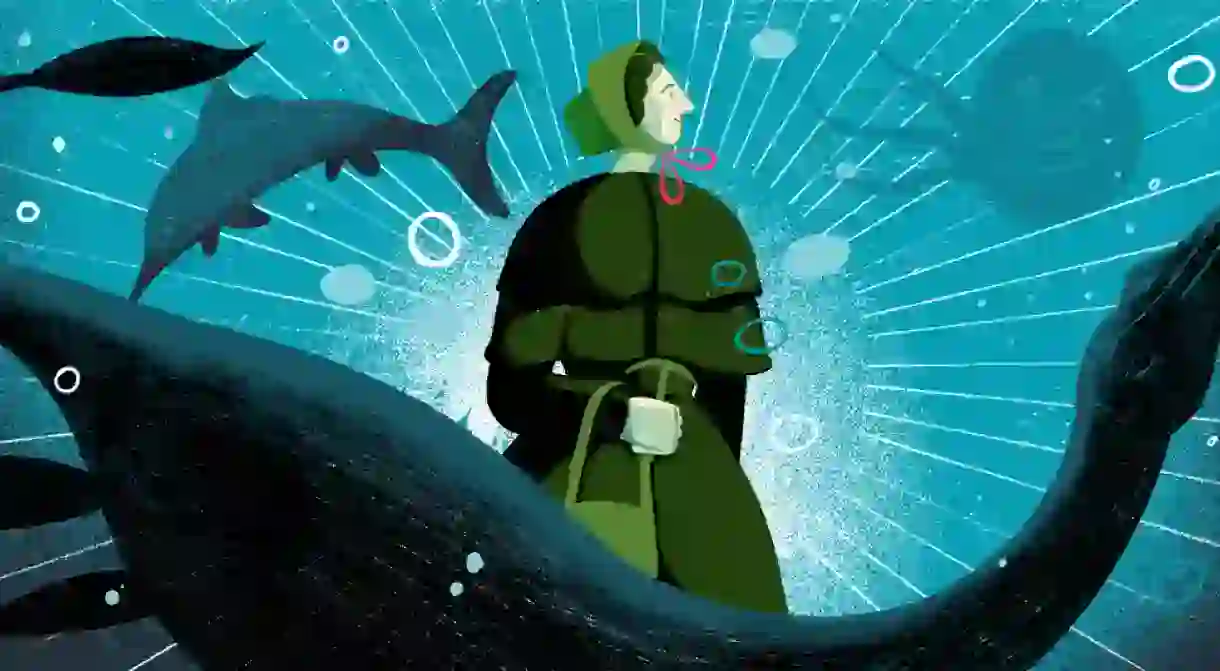History's Greatest Footnotes: The Remarkable Discoveries of Mary Anning

From her unassuming Dorset home, Mary Anning discovered the fossils of all manner of prehistoric creatures. While her exploits inspired a famous tongue twister, only recently has the scientific world begun to reappraise her contribution to early palaeontology.
Born in 1799, Mary Anning grew up in Lyme Regis, an area now known as the Jurassic Coast because of the number of fossils found there. Anning and her family capitalised on the unusual bounty proffered by the rugged shoreline, selling the various fossils they discovered at a stand by a local inn – the inspiration for the tongue twister ‘She Sells Seashells’.
But Anning’s interest ran deeper than money-making. Despite receiving a limited parochial education, her anatomical drawings and theories about her findings heavily impacted scientific studies of early palaeontology. While her work was well-regarded and widely used by members of the London Geological Society, she was unable to join as membership was barred to women – the prevailing theory during the 19th century being, according to historian James Burnes, that “women were somehow incapable of rigorous, rational thought”.
Anning died of breast cancer in 1847. Her contributions to the study of palaeontology went overlooked and she was relegated to the footnotes of history. Recently, however, her role has undergone significant reappraisal, and today, the fossils Anning collected and sold are considered indispensable to the scientific community.
Ichthyosaur
Between 1809 and 1811 Anning’s brother, Joseph, found the skull of an ichthyosaur (“fish lizard”). Joseph ended his search there, but Mary – who was just a child at the time – painstakingly uncovered the 5.2m (17ft) skeleton of the rest of the fossilised body a few months later.

Ichthyosaurs had been found in Lyme Regis before but received little fanfare. Anning’s discovery had the good fortune of ending up in the hands of William Bullock, a noted naturalist. Bullock displayed the fossil in his personal museum, drawing the attention of the larger scientific community. In 1814 Sir Everard Home described Anning’s discovery in a six-article series for the Royal Society, though he failed to attribute its finding to Anning.
Plesiosaurus
Anning continued to find fossils that then featured in various scientific journals and articles. In 1821 she found a plesiosaurus (“near-lizard”) fossil that geologists Henry de la Beche and William Conybeare used to analyse what fossil discoveries meant for the evolving scientific profession.

In the 19th century, most people subscribed to a literal interpretation of the Old Testament. According to Genesis, the Earth was no more than 6,000 years old and all animal species had been created by God. While radioactive dating techniques would not be developed until the 20th century, the existence of fossils caused some to question the Bible’s validity. Those suffering from extreme cognitive dissonance even suggested that fossils were planted by Satan to test people’s faith.
Pterosaur
Today, it’s easy to laugh off the belief that Satan placed fossils around the globe only to weaken the Christian faith. However, to 19th-century palaeontologists, it was a serious question. Anning herself was deeply religious, as were many of the scientists who used her findings. In many cases, palaeontologists did double duty as theologians as well.

Theologian-palaeontologist William Buckland – who was named Dean of Westminster in 1845 – was one of the first people to credit Anning for her discoveries in his paper on the pterosaur (“winged lizard”). He felt that the study of geology – which is what palaeontology was called at the time – was a part of a larger ‘natural theology’, a concept he outlined in his 1836 tome Geology and Mineralogy, Considered With Reference to Natural Theology. Buckland’s theory was that the presence of prehistoric fossils were evidence of ‘intelligent design’.
In 1828, Mary Anning had uncovered the first pterosaur to be found outside of Bavaria. Buckland, who purchased the fossil, used the specimen in his research and eventually sold it to the British Museum in 1935. It is now at London’s Natural History Museum.
Invertebrates and trace fossils
Mary Anning and her family maintained a fossil-selling business in Lyme Regis that she took over as an adult. One of the most prevalent fossils unearthed on the Jurassic Coast were trace fossils of invertebrates, fish and shells. These trace fossils, many of which look like imprints left in stone, were sold as curiosities for people to display in their homes. Anning also pioneered the study of coprolites (fossilised faeces) which helped palaeontologists study the diet of long-extinct species.

Recent interest in women’s contributions to science have made Mary Anning a more recognisable figure, with London’s Natural History Museum even naming a newly developed space for its members and patrons after her. The space is set to open on 3 September 2018.













